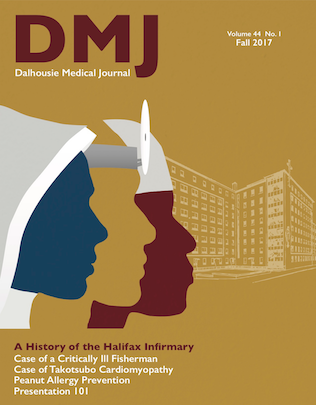The use of point of care ultrasonography in the perioperative period: A case of Takotsubo cardiomyopathy
DOI:
https://doi.org/10.15273/dmj.Vol44No1.7575Abstract
Takotsubo cardiomyopathy is a stress induced, transient cardiomyopathy that commonly presents with regional left ventricular akinesis or hypokinesis. The perioperative incidence of Takotsubo is estimated at 1:6700 cases and as such, should be familiar to practicing anesthesiologists. Point of care ultrasonography is a valuable tool for the evaluation of cardiac function and can be utilized in the perioperative setting by anesthesia staff. With some basic training in ultrasonography, one can quickly assess volume status and cardiac function, among other things. We present the case of a 73-year-old male undergoing an elective rotator cuff repair with an interscalene block under general anesthesia. Immediately following induction, the patient had a pulseless electrical activity arrest. Following immediate resuscitation, point of care ultrasonography was used to delineate the cause of the arrest and guide immediate management. Features consistent with Takotsubo cardiomyopathy – including regional left ventricular wall motion abnormalities with associated low ejection fraction – were identified on early ultrasound. The patient made a successful recovery and repeat cardiac imaging showed resolution of the wall motion abnormalities.
Downloads
How to Cite
Issue
Section
License
Authors who publish with this journal agree to the following terms:
- Authors retain copyright and grant the journal right of first publication with the work simultaneously licensed under a Creative Commons Attribution License that allows others to share the work with an acknowledgement of the work's authorship and initial publication in this journal.
- Authors are able to enter into separate, additional contractual arrangements for the non-exclusive distribution of the journal's published version of the work (e.g., post it to an institutional repository or publish it in a book), with an acknowledgement of its initial publication in this journal.
- Authors are permitted and encouraged to post their work online (e.g., in institutional repositories or on their website) prior to and during the submission process, as it can lead to productive exchanges, as well as earlier and greater citation of published work (See The Effect of Open Access).


